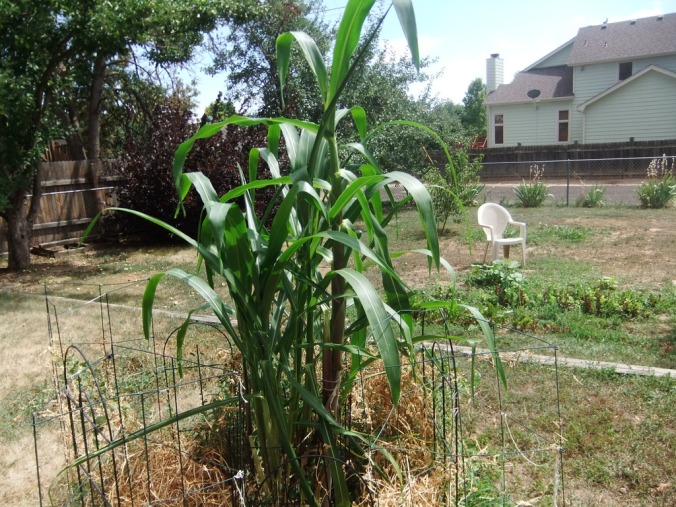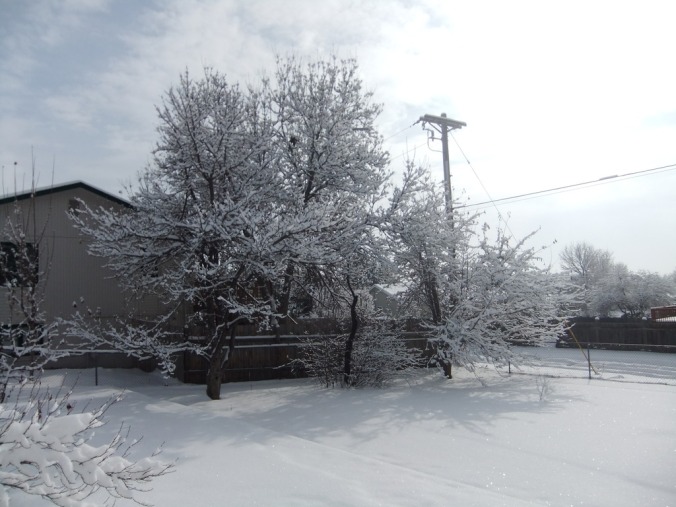So, i know I’ve blogged a bit about experimentally growing Teosinte in my post about growing prehistoric corn and also in my post about differences between teosinte species. Both posts have gotten quite a bit of traffic over the years and have brought people to my blog who are interested in Teosinte specifically.
For those of you who don’t know Teosinte is a progenitor to modern Corn (Also known as Maize), which is still able to interbreed with Corn. Some teosinte is annual, while others are perennial (or maybe bi-annual). There are many people who are interested in breeding perennial teosinte with corn to make perennial or bi-annual corn.
The major problem with trying to grow Teosinte in a moderate climate as here in Colorado in the United States is that it is adapted to grow in the climate of mexico and our growing season just isn’t really long enough. Even more so since Teosinte is day-length sensitive and does not even start to tassel, silk, and pollinate until the days get short and the sunlight shifts deeper into the red spectrum. By the time that happens here it is usually around August and often we get snow by September or October. Definitely not enough time for Teosinte or Corn seeds to mature and dry down for saving. …Or is it?!
Well, this year it just happened to turn out just barely long enough. I’m calling it my Christmas miracle! haha. I think it was a combination of it being a La Nina weather year with an unusually warm fall with no snow until here in December. But also with the fact that i dug up my clump of teosinte plants and put them in a pot in the garage. Though they were a bit unhappy in the garage and were touching the ceiling.
Still i was able to keep them in there long enough to hand pollinate them. But to be honest i thought i had again failed to get viable Teosinte seeds. But when the plants were dead i went out and happened to find some! Above is a picture of what i believe to be seeds of ‘Zea mexicana’ teosinte seeds.
If there is one moral of this story that you should take away it is this: Never give up even when everyone else thinks you are crazy or tell you that what you believe is impossible. I learned this in gardening from my friend Joseph Lofthouse of Utah. He has had success with so many of his unusual crops that no one else in his valley of Utah is able to grow. He often starts with many varieties of a plant as possible and grows as many as he can. Often more than 90% of them die or fail to produce seeds. But he only needs a few that do. Once he gets seeds he can start to effort to plant them year after year and adapt them to his climate. If they still fail to thrive he lets them die or culls them off himself. But he has a variety of unusual crops, such as Landrace Watermelon adapted to Utah (and by extension Colorado), Landrace Cantaloupe, Landrace inter-species hybrid squashes, Tomatoes that are self-incompatible and are highly attractive to bees (modern tomatoes are not at all and are highly inbred), and more.
On the left here is a photo of one small cob of a teosinte hybrid (zea diploperennis-corn hybrid from the USDA) pollinated with what i believe to be flour or field corn pollen. On the right is the same teosinte-corn hybrid cob line but i believe this one was self pollinated with its own pollen. It seems to have popcorn heritage as the seeds show popcorn / flint corn characteristics.

Here is another strain of day-length neutral teosinte (decended from Zea mexicana) that a collaborator Joseph Lofthouse of Utah is growing and having success with. I believe he got the seed originally from NativeseedsSEARCH in Arizona. He decided to test if it makes good popcorn.

Here is my Teosinte clump in the summer of 2016.

Here is the same spot with snow on it now in winter.
If you’d like to follow the discussion about growing teosinte in places it is not normally supposed to grow (or other unusual crops) then visit the Alan Bishop Homegrown Goodness plant breeding forum here!


